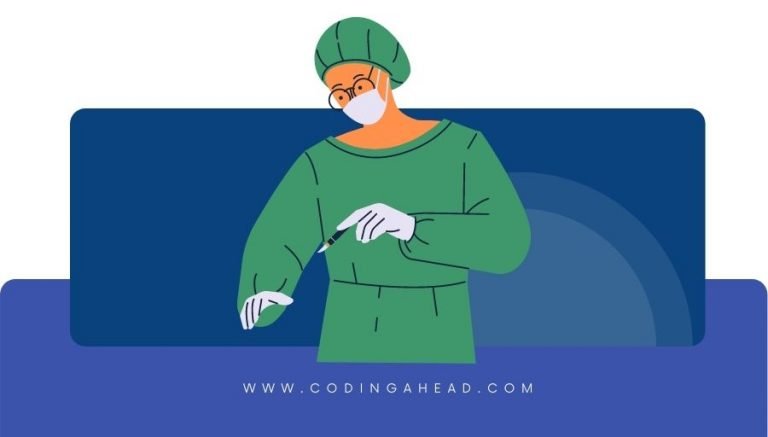How To Use CPT Code 32486
CPT 32486 describes the procedure for the removal of a part of the lung, specifically a sleeve lobectomy, which involves the resection of a segment of the bronchus followed by a broncho-bronchial anastomosis. This article will cover the description, official description, procedure, qualifying circumstances, appropriate usage, documentation requirements, billing guidelines, historical information and billing examples.
1. What is CPT Code 32486?
CPT 32486 is used to describe the surgical procedure of removing a part of the lung, specifically a sleeve lobectomy. This procedure involves the resection of a segment of the bronchus, followed by the connection of the cut ends through a broncho-bronchial anastomosis. It is typically performed to treat certain lung conditions or diseases.
2. Official Description
The official description of CPT code 32486 is: ‘Removal of lung, other than pneumonectomy; with circumferential resection of segment of bronchus followed by broncho-bronchial anastomosis (sleeve lobectomy).’ This code specifically refers to the surgical removal of a part of the lung, involving the resection of a segment of the bronchus and the subsequent connection of the cut ends through an anastomosis.
3. Procedure
- The procedure begins with the patient being appropriately prepped and anesthetized.
- The healthcare provider makes an incision in the chest, either through thoracotomy or sternotomy.
- A rib spreader may be used to separate the ribs, providing access to the lungs.
- The provider identifies the specific segment or lobe of the lung that needs to be removed.
- The lung segment, main bronchial vessels, and bronchial tubes are clamped, tied, and cut.
- The provider removes the designated part of the lung and resects the bronchus.
- The bronchus of the remaining lobe or lobes is then connected to the remaining portion of the cut bronchus through a broncho-bronchial anastomosis.
- A chest tube may be inserted for drainage of secretions from the chest cavity.
- The incision is closed using sutures or stitches, and in the case of sternotomy, the ribcage halves are wired back together.
4. Qualifying circumstances
CPT 32486 is performed in cases where a part of the lung needs to be removed, specifically through a sleeve lobectomy. This procedure is typically indicated for certain lung conditions or diseases that require the resection of a segment of the bronchus and the subsequent anastomosis. It is important to note that this procedure is not applicable for total pneumonectomy or removal of an entire lung.
5. When to use CPT code 32486
CPT code 32486 should be used when a sleeve lobectomy is performed, involving the removal of a part of the lung and the resection of a segment of the bronchus followed by a broncho-bronchial anastomosis. It is important to accurately document the specific details of the procedure to support the use of this code.
6. Documentation requirements
To support a claim for CPT 32486, the healthcare provider must document the following information:
- Patient’s diagnosis and the need for the sleeve lobectomy
- Details of the specific segment or lobe of the lung that was removed
- Description of the bronchus resection and broncho-bronchial anastomosis
- Date of the procedure
- Any additional procedures or techniques used during the surgery
- Any complications or unexpected findings
- Signature of the healthcare provider performing the procedure
7. Billing guidelines
When billing for CPT 32486, ensure that the procedure performed matches the description of a sleeve lobectomy with broncho-bronchial anastomosis. It is important to follow the specific guidelines and documentation requirements provided by the payer. Additionally, be aware of any bundling or unbundling issues and use appropriate modifiers if necessary.
8. Historical information
CPT 32486 was added to the Current Procedural Terminology system on January 1, 1994. The code underwent a change in description on January 1, 2012, to specify the removal of lung other than total pneumonectomy. It is important to stay updated with any changes or revisions to the code.
9. Examples
- A patient undergoes a sleeve lobectomy to remove a segment of the lung affected by lung cancer.
- A healthcare provider performs a sleeve lobectomy to treat a patient with bronchiectasis.
- A sleeve lobectomy is performed on a patient with a lung abscess to remove the affected lung segment.
- A patient with a tumor in the bronchus undergoes a sleeve lobectomy to remove the tumor and reconnect the bronchus.
- A sleeve lobectomy is performed on a patient with a chronic lung infection to remove the affected lung segment and improve respiratory function.
- A healthcare provider performs a sleeve lobectomy on a patient with a bronchial obstruction to restore proper airflow.
- A patient with a lung injury undergoes a sleeve lobectomy to remove the damaged lung segment and promote healing.
- A sleeve lobectomy is performed on a patient with a congenital lung abnormality to correct the structural issue.
- A healthcare provider performs a sleeve lobectomy on a patient with a lung cyst to remove the cyst and prevent complications.
- A patient with a lung tumor undergoes a sleeve lobectomy to remove the tumor and preserve lung function.



